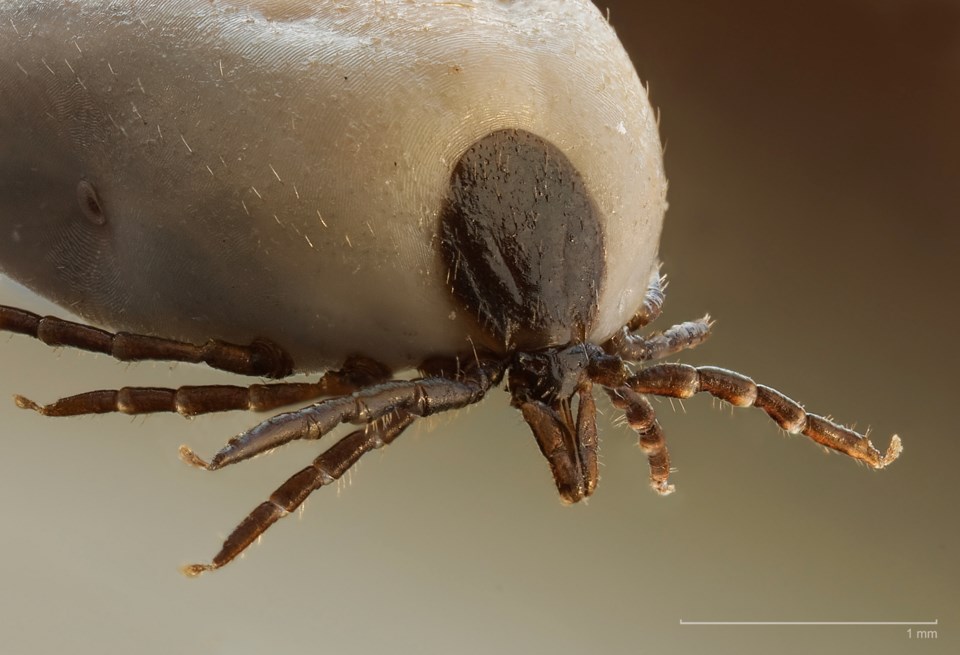One hundred ticks were submitted by local residents to Algoma Public Health by September of this year, compared to 24 in all of 2016, members of the local health board learned this past week.
From 2010 to 2015, an average of just 12 ticks were submitted to APH annually.
"This suggests increasing awareness of Lyme disease and the tick surveillance program," Dr. Marlene Spruyt, medical officer of health and chief executive officer, said in a report to the APH board.
But questioned at a meeting on Wednesday night by Dr. Heather O'Brien, Dr. Spruyt conceded that the increased submissions might also indicate growth in the local tick population.
Each spring and summer, APH conducts tick surveillance to confirm the presence of blacklegged ticks in Algoma District.
"Lyme disease is transmitted through the bite of infected blacklegged ticks and if left untreated, can result in neurological effects, recurring arthritis and in very rare cases, death," Spruyt said.
"Lyme disease is becoming more common in Ontario. In 2011, 90 cases of Lyme disease were reported, compared to 316 cases in 2016, a 251 per cent increase."
In Algoma, an average one tick a year tests positive for Lyme disease.
So far this year, two ticks tested positive.
"Ticks found and submitted by residents are forwarded to the national lab for identification and testing as part of the provincial strategy," Spruyt said.
"In addition APH is fortunate to be located near the Great Lakes Forestry Centre which has supported the submission of ticks found on pets."
"Further surveillance is needed to establish whether the blacklegged tick is becoming endemic in Algoma or is being identified in greater numbers due to increased submissions and bird migration," she said.
West Nile virus
Algoma Public Health also tracks West Nile virus infection, which is transmitted to humans through bites from infected mosquitoes that acquire the infection from birds.
"In 2017 there were no identified human cases of West Nile virus but we did have a report of a horse that tested positive," Spruyt said.
In June, live mosquito larvae were discovered in PUC ground vaults – catch basins used in electrical systems.
The health unit then asked PUC to treat its 536 ground vaults.
No larvae were found four to six weeks after treatment was applied.
APH also traps adult mosquitoes in Sault Ste. Marie, Elliot Lake, Blind River, Wawa and White River to determine what species are present and whether the virus is present.
"As of Sept. 1 no mosquitoes in these traps have tested positive for West Nile virus," Spruyt said.
"The last known human case of West Nile virus found in Algoma was in 2013. The consistently low population of prominent vectors suggests that Algoma is an area of low risk of transmission of West Nile virus to humans, but Culex species of mosquito (linked to West Nile virus) are increasing in proportion in Algoma and across the province."
"Climate change influences temperature and rainfall could change this picture in the future."
